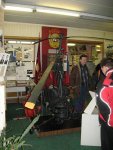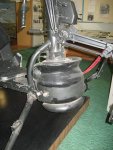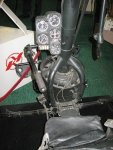Kamov KA 56
Kamov KA 56
Now i like show the Kamov foldable helicopter.The helicopter looks like a mockup.
I believe this helicopter was never flown.The concept of the helicopter its a good idee,small ,foldable,not heavy.
I am interesst to get mor information over this great helicopter concept.
thanks
Jetman
Kamov KA 56
Now i like show the Kamov foldable helicopter.The helicopter looks like a mockup.
I believe this helicopter was never flown.The concept of the helicopter its a good idee,small ,foldable,not heavy.
I am interesst to get mor information over this great helicopter concept.
thanks
Jetman







